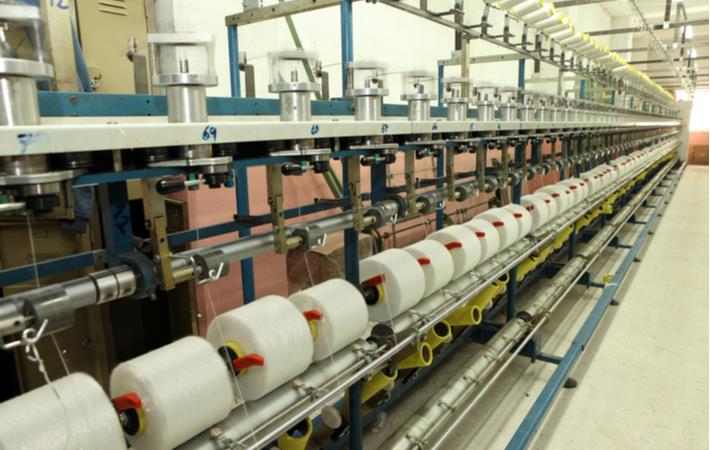The US withhold release order (WRO) on cotton and apparel imports from specific producers in Xinjiang Uygur Autonomous Region (XUAR) may escalate global trade tensions and thus have negative implications for the Indian textile sector in the short run, according to India Ratings and Research (Ind-Ra), which believes it could, however, be beneficial in the medium term.
There is a risk of further sanctions by the US government on curbing imports of the products originating from or having linkages with XUAR, Ind-Ra said.
This action may have spooked China and it could resort to retaliatory measures. Cotton procurement from the United States could be delayed by Chinese mills, leading to favourable supplies from Brazil and India, both of which are likely to have high inventories.
China’s total apparel exports declined by 31 per cent year on year (YoY) in the first quarter of fiscal 2020-21 compared to a significantly higher decline for nations like Bangladesh and India. India’s cotton yarn exports declined by 28 per cent YoY in the last fiscal to ₹196 billion on account of a 53 per cent YoY decline in demand from China due to the US-China trade war.
While India’s exports to China increased by 1.8 times YoY during June this year due to pent-up demand and restocking by Chinese players, the overall exports reduced by 29 per cent YoY during 1QFY21. India’s yarn exports over the past three years have been around 1.2 million tonnes; it reduced drastically in FY20 to less than 1 million tonnes over the geo-political tensions and higher competition from ASEAN countries.
While demand from the United States could impact overall cotton demanded by China, the value-addition could gradually move out of China to other geographies. However, this is more of a medium term-phenomenon., said Ind-Ra in a press release.
Indian yarn players have high export dependence on China, which reduced to around 20 per cent for the three months ended June this year on account of a lower demand and growing competition from Vietnam and Pakistan.
The trade war extension and labour-related issues could lead to the creation of additional yarn and cotton demand from neighbouring countries to the tune of 0.5 million tonnes and 8-10 million bales (480lb) in India, Ind-Ra said.
The agency believes countries like Pakistan and Brazil have a pole position compared to India due to their preferential status. However, India can get a share of the pie, given the low-cost raw material availability and established presence of Indian textile players in the United States.
Ind-Ra believes the shift in demand could lead to a healthy recovery in credit metrics and ease of liquidity stress for exporters in fiscal 2020-21.
Given Vietnam’s textile industry has strong dependency on China, it is equally vulnerable to have supply chain linkages with the tainted XUAR region. Vietnam may cater additional cotton yarn production of around 0.4 million tonnes to meet Chinese demand.
However, incremental cotton/yarn sourcing could be from India, given the logistics and cost advantage. During cotton year 2020, India exported 8 per cent of its total cotton produce to Vietnam.
Any impact on the Chinese textile industry would flow down to Vietnam directly, impacting capacity utilisations, Ind-Ra said. Vietnam had a total yarn production capacity of 2.5 million tonnes as of 2019, of which about 45 per cent is controlled by China and Taiwan.Vietnam imports 55 per cent of its cotton requirements from the United States and exports 80-85 per cent of its total cotton yarn production to China. Also, it buys 55 per cent of its synthetic yarn requirement from China for its weaving and knitting industry, which leads to domicile linkages with China.
China’s annual cotton consumption exceeds its domestic production and hence it depends on imports from countries such as the United States, Brazil, Australia and India. While the United States and Brazil share 60-65 per cent of the cotton imported by China, the share of India is below 10 per cent.
The US withhold release order on cotton and apparel imports from specific producers in Xinjiang Uygur Autonomous Region (XUAR) may escalate global trade tensions and thus have negative implications for the Indian textile sector in the short run, according to India Ratings and Research, which believes it could, however, be beneficial in the medium term.#
China imports cotton yarn majorly from Vietnam (30-35 per cent) and India (7-10 per cent) of its total import of around 2 million MT annually. The agency estimates the annual cotton yarn requirement for China at around 4.5-5 million tonnes for CY2201 with usage of cotton to man-made around 35:65 in fabrics and apparels.
Furthermore, US importers are likely to be concerned about any economic, legal or reputational concerns on any of their supply chains linked to XUAR. The United States imported $7.35 billion of apparel products from China during January-July 2020, while China exported around 20 per cent of its overall apparel exports to the United States in the first quarter of fiscal 2020-21.
China also depends on the United States for raw cotton. XUAR produces lion’s share of the China’s annual cotton production at 85 per cent and under 20 per cent of world’s total. Also, 70 per cent of total cotton spun into yarn produced in China is originated from XUAR.
While Vietnam has risen significantly to the occasion by increasing the US apparel market share to 20.1 per cent in the first quarter of fiscal 2020-21 on account of China’s loss of market share by 800 basis points (bp) year on year (YoY), India’s market share dropped by 400 bp in the first quarter of fiscal 2020-21 due to lower shipments and tighter lockdowns in the country.
Fibre2Fashion News Desk (DS)
